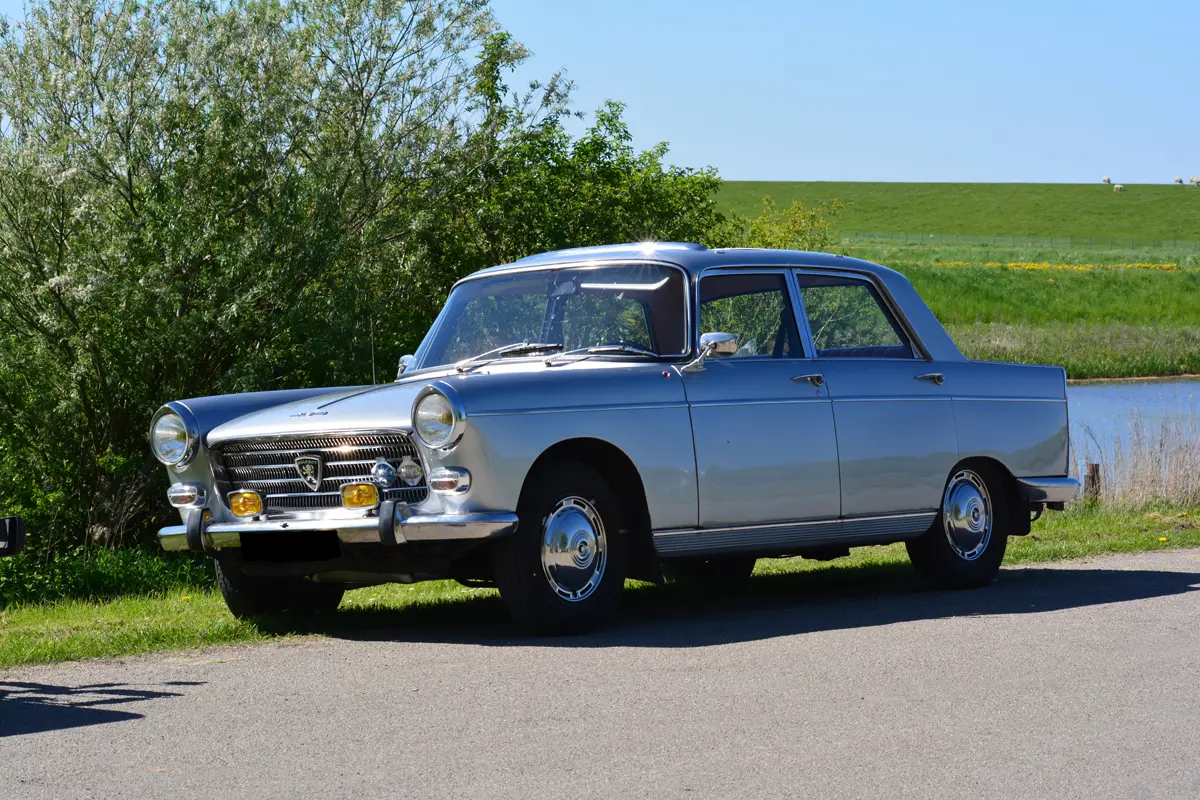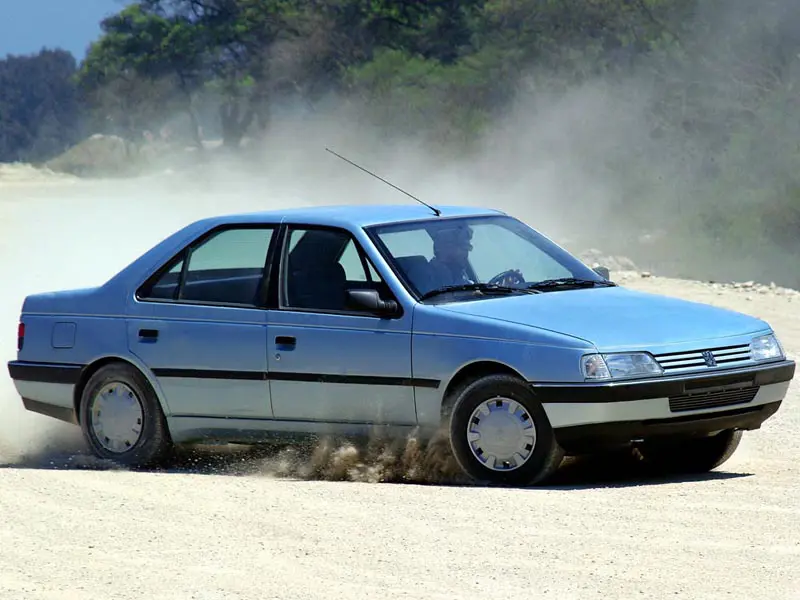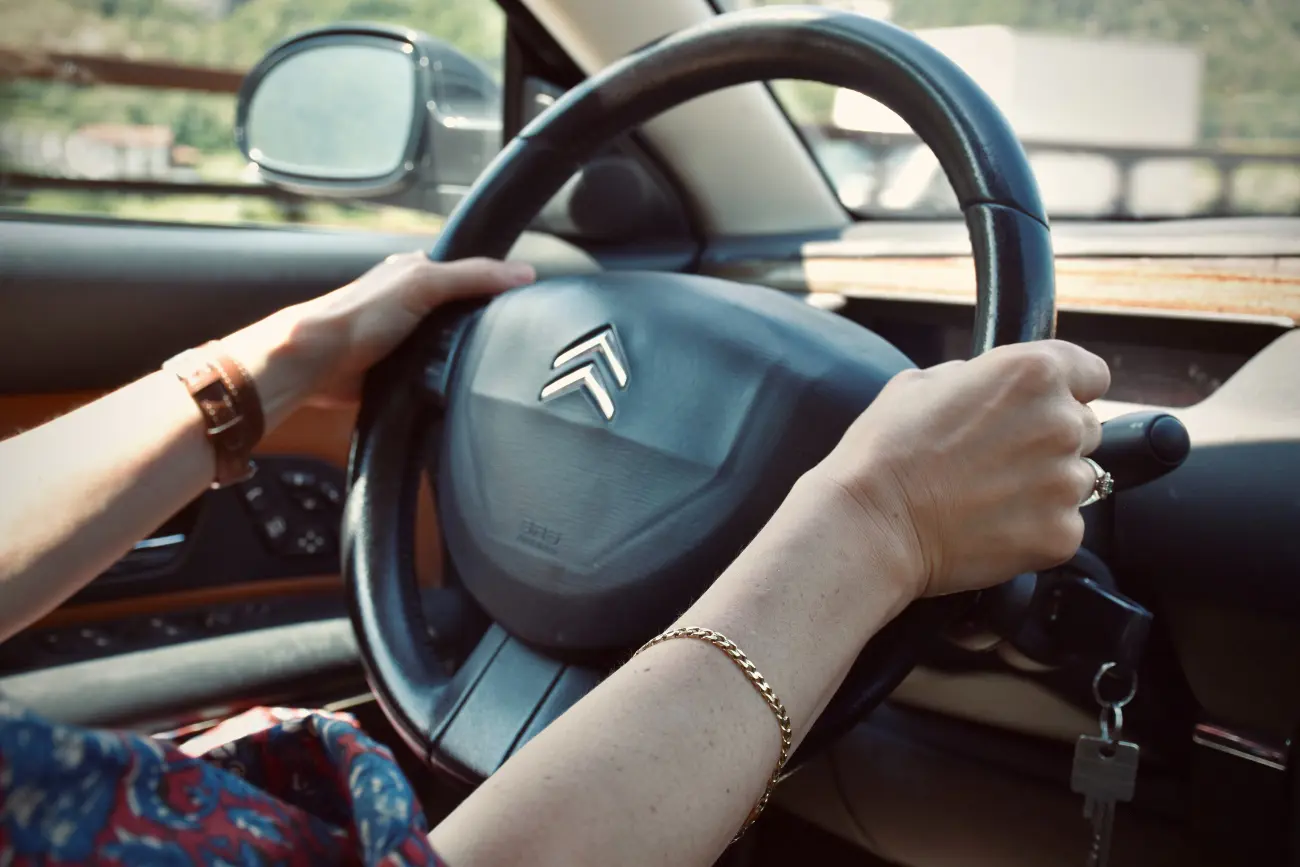10 cars that epitomise French style
28 October 2021
The French have always made their cars with a certain… je ne sais quoi. Take the Citroen 2CV, blessed with perhaps the most recognisable silhouette of any car in history.
Or the first Renault Espace, which showed that space-age looks and astonishing people-carrying capacity could be achieved within the same vehicle. Yes, in these and so many more examples, French car design always shows a distinct flair, a willingness to throw aside the rulebook and do things differently.
Here are 10 cars that, for us, illustrate the French way of doing things. You can find more brilliant French cars in our list of the 30 best French classic cars.

Citroen DS (1955-75)
In all honesty, this was the first name down on the list, emotively as well as chronologically. Not for nothing was the beautiful DS given a name that sounds like 'goddess' in its mother tongue.
Citroen have always been known – and loved – for innovating, for taking bold new steps in automotive technology, and the DS was no exception. From its 1955 launch onwards, the DS became an almost instant classic, thanks to that aerodynamic, futuristic design.
What's more, with the DS Citroen broke new ground in handling, braking and ride quality. For example, it was the first production car to get hydropneumatics suspension (which was to become a staple on large Citroen cars, giving them their famed ride comfort, from now on).
There were so many felicitous design touches – such as the turn indicators mounted in the upper corners of the rear window, and the tail and brake lights nestled within the rear bumper. In an oh-so-French moment, philosopher Roland Barthes declared in an essay about the car that it looked as if it had "fallen from the sky". Yes, you read that right: a philosophical essay! About a car! Pass the Gauloises…
Citroen Ami (1961-79)
Rarely has the B-sector, or supermini class, been graced with such extravagant design as Citroen's 1960s/70s model, the Ami. Available in two generations (the Ami 6 and Ami 8) and both saloon and estate variants across nearly two decades, the Ami was a striking-looking car that packed quite a few stylistic innovations into its four metres.
For one thing, the Ami 6's saloon variant had that most unusual feature – a reverse-raked rear windscreen that sloped inwards as it descended from the roof, lending the car an almost concertinaed look.
The Ami was also one of the first cars, along with Ford's Taunus P3, to use non-round headlights, a development that would become extremely widespread over the next two decades. And, in a nice touch, the Ami's seats could be easily removed – indeed, sales brochures included photographs of the seats being used as picnic chairs. Bon appétit!
We also fondly remember the Ami 6 for its appearance in one of the greatest Tintin books, The Castafiore Emerald. Driven by the village doctor who comes to inspect Captain Haddock's sprained ankle, it forms the centrepiece of a brilliant comic scene involving Professor Calculus and has since been honoured with its own diecast scale model.
Facel Vega II (1962-64)
Produced by the short-lived (1939-64) Facel automobile company, the Vega was a stunning grand tourer that appeared in various subtly different iterations from 1951 to 1964. Perhaps the most gorgeous was the Vega II, an interesting Gallic take on the Mercedes 300SL style.
The Vega became an epitome of 1950s/1960s French flair, and a list of its owners reads like a who's-who of early 1960s movers and shakers.
Vega IIs were owned by, among others: Pablo Picasso; Christian Dior; Joan Collins; Ringo Starr; Fred Astaire; Frank Sinatra… and several Saudi princes. And rather than hopping on a plane, legendary racing driver Stirling Moss would prefer to pilot his Vega from one race to the next. We don't blame him: the car is a design classic, with its subtle tailfins, vertically stacked headlights, airy glasshouse and long, sleek profile.
Also notable was the fact that the four-seater Vega II could outsprint the world's most prominent two-seater coupes (the Aston Martin DB4, the Ferrari 250 GT, the gull-wing Mercedes-Benz 300SL) in a straight 0-60 race.
Managing that rare combination of outright speed, refinement, comfort and gorgeous looks, the Facel II was pricey – a fair bit more than a contemporary DB4, and almost three times as much as a Jaguar E-Type.
Today, they are recognised as an absolute classic and fetch eye-watering prices. Ringo Starr's partially restored Facel II fetched £337,500 at a 2013 Bonhams auction. If ever a car cried out for specialist classic car insurance, the Facel Vega is that car.
Citroen SM (1970-75)
Compared to the graceful, swooping good looks of the DS, the 1970s SM has always seemed, to us, to have something a little darker, edgier and more swaggering about it. Maybe that's partly down to the decade in which it flourished – we can't see an SM without visualising brown leather jackets, flared trousers, and floppy collars, and hearing the wah-wah guitars of some early funk standard.
This being Citroen, there were some eye-catching technical innovations within the SM – such as self-levelling headlights that swivelled with the steering, allowing the driver to see around corners.
What was in the name? It's thought that the 'S' may come from Citroen's Project 'S', which aimed to produce a sports version of the adored Citroën DS. The 'M', by this logic, refers to Maserati: Citroen had recently acquired the Italian sports car marque, and the SM shares some underpinnings with contemporary Maseratis.
Another plausible suggestion, though, is 'Sa Majesté' ('Her Majesty'), which follows on suitably from the DS's nickname 'la déesse', or 'the Goddess').
Whatever the truth may be, we love the SM and all its rakish charm every bit as much as its illustrious predecessor.
Alpine A310 (1971-84)
The last car conceived independently by Dieppe-based Alpine before its takeover by Renault, the Alpine A310 is a magnificently bold, in-your-face slice of early 1970s engineering that bears echoes of cars like the Opel Manta, Vauxhall Firenza 'droop snoot' and even, under a favourable light, the Ferrari Daytona. There's even a hint of Chevrolet Corvette in there, don't you think?
The first generation (1971-76) might have been slightly underpowered with its four, rather than six cylinders. However, for us this is when the Alpine's looks were at their futuristic best.
That bank of six headlights covering the entire front grille gave the car a menacing look, as well as looking as though it had just been beamed down from some more advanced interplanetary society.
Renault Fuego (1980-86)
If you were after an affordable, fine-looking small coupe in the early 1980s, your choice wasn't limited to the Ford Capri. Other options included the VW Scirocco, Opel Manta… and Renault's striking, wedge-shaped Fuego.
This last was a replacement for the marque's 15 and 17 coupes from the 1970s, both decent-looking machines. However, the Fuego moved things on considerably, with its angular, aerodynamic looks (the design process included sessions in a wind tunnel to reduce drag: more technical innovation from Renault).
Styling was by Robert Opron, who'd previously given us two stylish Citroen range-toppers, the SM (see above) and CX. The Fuego came in a variety of attractive colours, including an attractive metallic sky blue. Here on the UK's roads, however, we mostly seemed to see it in gold – which suited it, we have to say, very well.
The one you want, if you can find it, is the 132bhp Turbo, with its striking decals, bright-yellow fog lights and cross-spoke alloy wheels.
Peugeot 405 (1987-97)
Do you remember the classic 1989 TV ad in which a sleek saloon car accelerated through a burning corn field, to the strains of Berlin’s Take My Breath Away? A superb advert for what, the UK was quickly learning, was a superb car.
A deserving European Car of the Year winner in 1988, the Peugeot 405 managed to do everything that was demanded of it very well. Good looks? Check!
That front grille and headlight combo worked beautifully, and the whole thing just looked perfectly proportioned. The car was styled by Pininfarina, after all, who were also busy designing the Ferrari F40 at around the same time.
Comfort? Check! This was a French car, after all, and they have always gone for the soft, cosseting ride. Performance? Actually, check, as well – especially if you went for the Mi16 model with its 160 hp and top speed of 220 km/h (140 mph).

Renault Avantime (2001-2003)
Is it an MPV? Estate? Coupé? Grand tourer? We're never quite sure – but it doesn't make us love the quirky Renault Avantime any less.
Styled by the flamboyant Patrick Le Quément – whose other creations included the (initially) equally controversial Ford Sierra – the Avantime refused to be classified. Not only that, in fact it refused to stick around for very long, remaining in production for just two years from 2001 to 2003.
Like all great French cars, the Avantime's looks are futuristic and well outside the box – we love the exposed aluminium used for the greenhouse, resulting in an eye-catching, two-tone effect. The absence of B-pillars, making for a large, airy interior, was another great touch.
Why was it such a short-lived car and such a poor seller? Partly because of internal competition with another large, upmarket Renault, the slightly longer-lived Vel Satis executive car; partly, we imagine, because buyers didn't know how to classify it and what to do with it. A shame as, for us, the Avantime epitomises bold, adventurous French design at its very best.
Citroen C6 (2006-2012)
It seems to be one of the ways of the world that French executive cars depreciate much more quickly than their German rivals. Perhaps some aura of unreliability still clings to the French marques; perhaps the whole concept of 'French luxury car' doesn't sit as well with buyers, who won't be tempted out of their 5 Series, A6s or E-Classes.
Whatever the reason, the fact is that you can now pick up a used Citroen C6 for a fair bit less money than any of its German equivalents – and, by doing so, buy yourself a handsome, cosseting and quirkily French take on the luxury automobile.
This being Citroen, the car was packed with innovations – such as its hydropneumatics suspension, with three automatic modes (motorway, poor road surface, and either comfort or dynamic).
Mostly, though, we just love the look of the thing. The word 'barge' gets used a lot in connection with large cars, but we think it suits the C6's sleek, aristocratic looks well.
It's certainly a lot more interesting to look at than its BMW, Merc, and Audi rivals. If we were in the market for a second-hand luxury saloon, we might put our hard-earned cash into one of these.
We're happy to label the C6 a modern classic, and to provide proud C6 owners with specialist classic auto insurance.

Peugeot RCZ (2009-15)
We haven't often associated solid, rugged Peugeot with graceful, quicksilver little sports cars, but the RCZ confounded all our expectations. During its lifetime it was frequently road-tested against its most obvious competitor, the Audi TT – and often came out on top.
The RCZ is a beautiful-looking thing, with its prowling, low stance and that brilliant 'double bubble' roof that creates more headroom for passengers without losing any of those purposeful looks. It also handles wonderfully, matching the ubiquitous TT in road manners and looks – and undercutting it on price.
There are technically four seats, but we'd probably advise against cramming any but the smallest occupants back there. Apart from that, we can't find anything much to say against the thoroughly brilliant RCZ. Bravo!
Classic car insurance with Lancaster
If you’re wondering how much your fabulous French classic is worth, why not ask for a two-year agreed valuation? Ask the team for more details when you get a classic car insurance quote.
With limited mileage and car club member discounts, see how much you could save.
Get a quote today.
